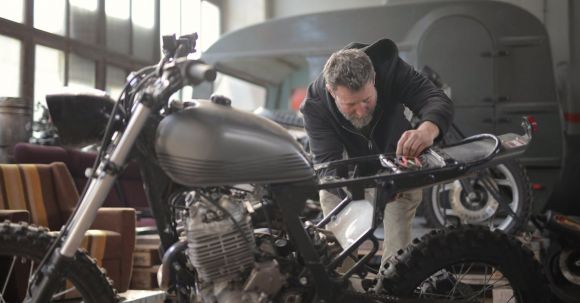Your motorcycle’s carburetor plays a crucial role in the smooth operation of the engine. Over time, the carburetor can become clogged with dirt, debris, and varnish, leading to poor performance and reduced fuel efficiency. To keep your motorcycle running at its best, regular carburetor cleaning is essential. In this article, we will guide you through the steps to properly clean your motorcycle’s carburetor.
1. Gather the necessary tools and materials
Before you start, make sure you have all the tools and materials you will need. These include a carburetor cleaning solution, a clean cloth or rag, a small brush, a screwdriver set, and a can of compressed air. Having everything ready will help streamline the cleaning process.
2. Disconnect the carburetor
To access the carburetor, you will first need to disconnect it from the motorcycle. Start by turning off the fuel supply and removing the air filter. Next, disconnect the throttle and choke cables, as well as any vacuum or fuel lines attached to the carburetor. Finally, remove the bolts holding the carburetor in place and carefully detach it from the motorcycle.
3. Disassemble the carburetor
Once the carburetor is detached, it’s time to disassemble it for thorough cleaning. Begin by removing the float bowl and the float assembly. Take note of the assembly order and orientation of the components to ensure proper reassembly later. Use a small brush to clean the float bowl and remove any debris or residue.
4. Clean the jets and passages
The jets and passages inside the carburetor are often the most susceptible to clogging. Using the appropriate screwdriver, carefully remove the jets from the carburetor body. Inspect each jet for any signs of blockage or build-up. Clean the jets by soaking them in a carburetor cleaning solution and then using compressed air to blow out any remaining debris. Similarly, clean the passages by spraying carburetor cleaner through them and using compressed air to ensure they are clear.
5. Clean the carburetor body
With the jets and passages cleaned, turn your attention to the carburetor body itself. Using a clean cloth or rag soaked in carburetor cleaning solution, wipe away any grime or residue from the inside and outside of the carburetor body. Pay close attention to the throttle plate and the idle circuit, as these areas are prone to clogging.
6. Reassemble and reinstall the carburetor
Once all the components are clean and dry, it’s time to reassemble the carburetor. Follow the reverse order of disassembly, ensuring that all the parts are correctly aligned and tightened. Reinstall the carburetor onto the motorcycle, reconnecting the throttle and choke cables, vacuum and fuel lines, and securing it with the bolts. Finally, reattach the air filter and turn on the fuel supply.
7. Test and fine-tune
After cleaning and reinstalling the carburetor, it’s crucial to test the motorcycle to ensure everything is working correctly. Start the engine and let it idle for a few minutes, paying attention to any abnormal noises or vibrations. Take the motorcycle for a short test ride, checking for smooth acceleration and responsive throttle control. If necessary, fine-tune the carburetor by adjusting the idle and air-fuel mixture screws to achieve optimal performance.
In conclusion, cleaning your motorcycle’s carburetor is an essential maintenance task that should not be overlooked. By following these steps and taking the time to properly clean and inspect your carburetor, you can ensure that your motorcycle runs smoothly, efficiently, and reliably. Regular carburetor cleaning will not only prolong the life of your engine but also enhance your overall riding experience. So, set aside some time, gather your tools, and give your motorcycle’s carburetor the attention it deserves. Your bike will thank you for it.
